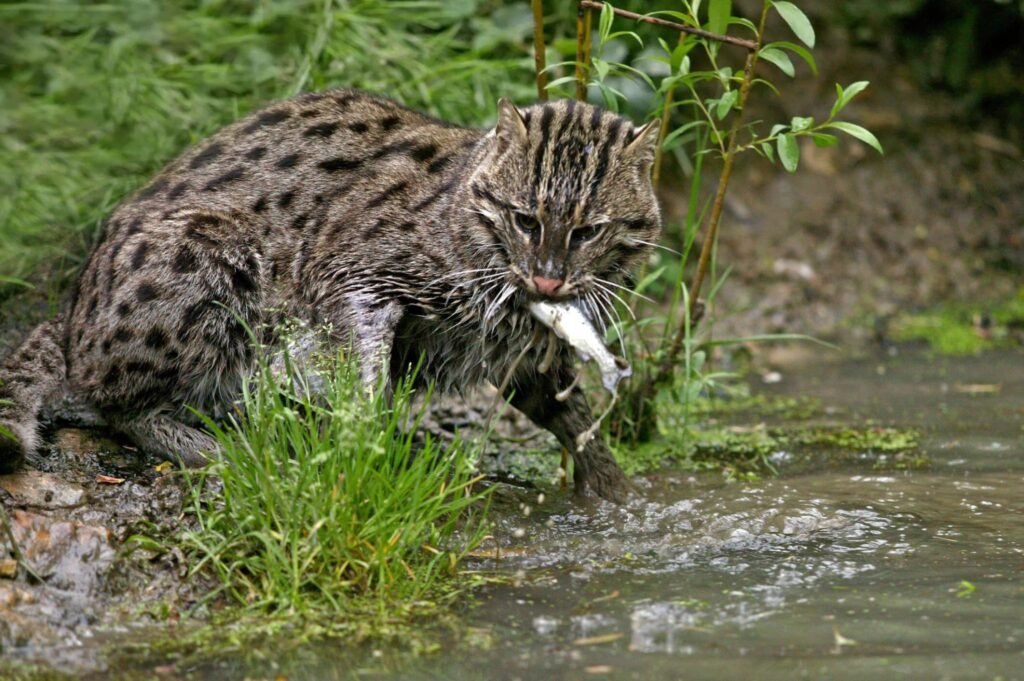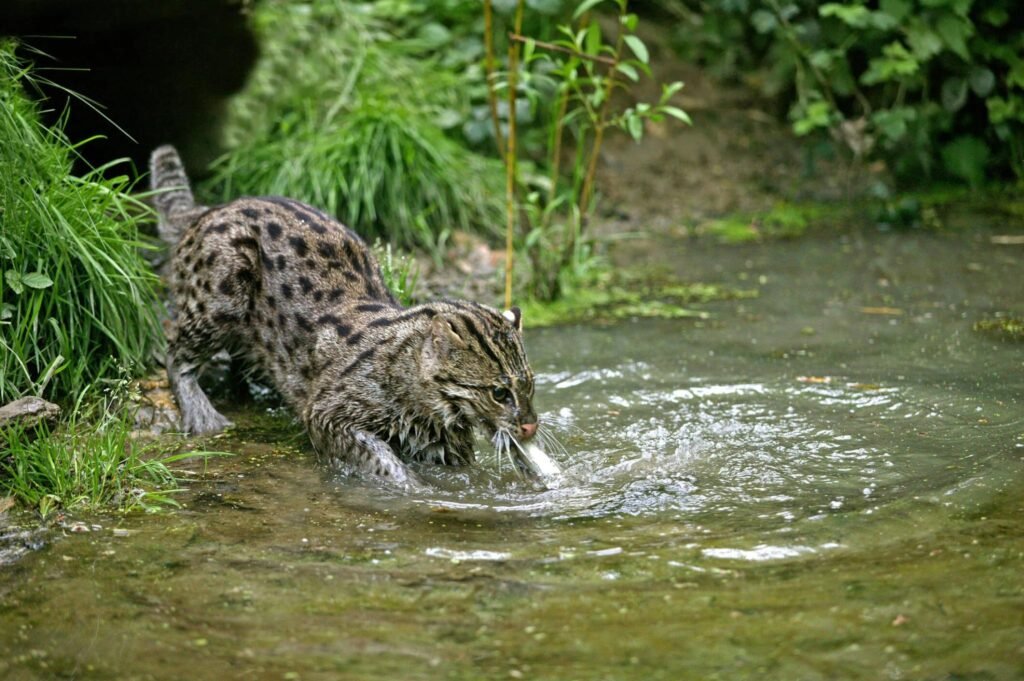
The fishing cat, Prionailurus viverrinus, is a unique and robust wild cat specifically adapted for a semi-aquatic lifestyle. Found across scattered wetland areas of South and Southeast Asia, this medium-sized feline has a stocky build, short legs, and a distinctive olive-gray coat adorned with black spots and stripes. Unlike most cats, fishing cats have partially webbed paws and their claws don’t fully retract, aiding them in grasping slippery prey. They are expert swimmers and have been observed wading, swimming, and even diving to catch their primary diet of fish, though they are also opportunistic hunters of frogs, snakes, birds, and small mammals. Their short, dense double-layered fur provides insulation and a water barrier, keeping them warm and dry during their aquatic hunts.

Fishing cats play a vital role in maintaining the ecological balance of the wetland ecosystems they inhabit. As a top predator in these environments, they help regulate the populations of fish and other aquatic creatures, preventing overpopulation and ensuring the health of the aquatic food web. The presence of fishing cats is a strong indicator of a healthy and thriving wetland, as they rely on these specific habitats for survival. Protecting fishing cats directly contributes to the conservation of these critically important wetlands, which in turn provide essential services such as water filtration, flood control, and support for a vast array of other plant and animal life. Their vulnerable conservation status underscores the urgent need to preserve these unique cats and their indispensable wetland homes.
Every day, wild cats around the world face threats like habitat loss, poaching, and natural climate progression. But hope isn’t lost. With your support, we can protect these majestic animals and preserve their habitats.
Join our growing community of wildlife champions and help create a safer future for all 40 wild cat species.
Zoo-EV is a nonprofit organization dedicated to the protection and preservation of the world’s 40 wild cat species through education, community engagement, and conservation initiatives. Zoo-EV is recognized as a 501(c)(3) tax-exempt organization by the IRS, with the Employer Identification Number (EIN) 88-3636567.